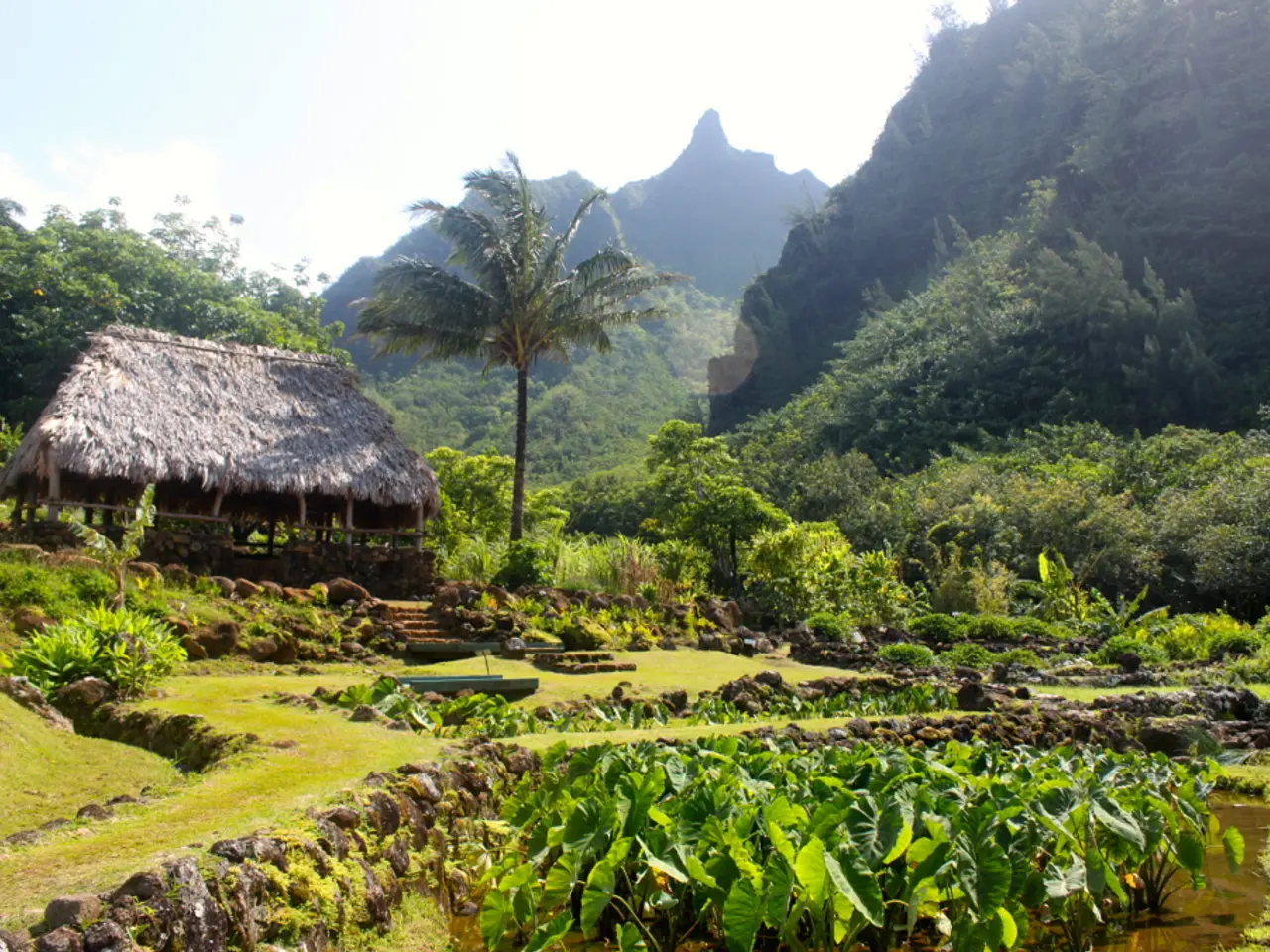Thermal crust in Yellowstone collapses, gravely scorching a teenager
In a recent incident, a 17-year-old boy was severely burned after breaking through a thin surface of a geothermal area in Yellowstone National Park's Lone Star Geyser Basin. The boy was hiking with his family at the time of the accident.
The Lone Star Geyser Basin, located 3 miles southeast of Old Faithful, is a popular destination for visitors seeking a more peaceful alternative to the park's busier geyser basins. However, despite its serenity, the Lone Star Geyser Basin contains active geothermal features similar in risk to the park's more crowded areas.
The ground in the Lone Star Geyser Basin is especially delicate, with hot, mineral-laden water just inches beneath the surface. Approaching thermal features, touching runoff, or attempting to soak in hot springs is illegal and often deadly. In fact, more than 20 people have died in Yellowstone's hot springs and geysers since the late 1800s, and dozens more have been injured.
Yellowstone's regulations strictly prohibit visitors from leaving designated trails and boardwalks in thermal areas. Pets are also prohibited in geothermal zones. Emergency responders provided on-site care before transporting the boy to a regional hospital for further treatment.
The National Park Service is investigating the incident and has confirmed it is the first thermal injury reported in the park this year. As of now, the Lone Star Geyser area remains open to the public, but increased signage and ranger presence may be implemented to reinforce safety messaging.
Parents are asked to keep children close in thermal areas. The rules apply to everyone, regardless of experience, age, or perceived safety. It is essential to remember that thermal burns from these features are a common cause of serious injury and death, often caused by people walking off boardwalks or ignoring safety rules near the fragile ground crust and boiling water below.
Yellowstone's geothermal features are powered by underlying volcanic activity, which keeps water at or above boiling temperatures and alters ground chemistry in unpredictable ways. Visitors are reminded to respect the park's rules and stay on designated trails to ensure their safety and the preservation of these unique and sensitive areas.
[1] National Park Service. (n.d.). Thermal Features. Retrieved from https://www.nps.gov/yell/learn/nature/thermal-features.htm [3] National Park Service. (n.d.). Safety in Thermal Areas. Retrieved from https://www.nps.gov/yell/learn/nature/safety-in-thermal-areas.htm
- The incident serves as a stark reminder of the risks associated with hiking in geothermal areas.
- Science, particularly environmental science, plays a crucial role in understanding the dynamics of geothermal features in Yellowstone.
- Workplace wellness initiatives can include education about the dangers of such areas to prevent similar accidents in outdoor work environments.
- Medical conditions such as chronic kidney disease and certain respiratory conditions might affect an individual's response to thermal injuries.
- Chronic diseases, including cancer, could be exacerbated by exposure to the mineral-laden water found in Yellowstone's geothermal areas.
- Digestive health can be impacted by consuming contaminated food or water that may come into contact with these geothermal features.
- Eye health can be affected by the harsh chemicals found in some geysers and hot springs.
- Hearing can be susceptible to damage due to sudden temperature changes in close proximity to boiling water.
- Health and wellness programs should emphasize the importance of heeding safety warnings when visiting sensitive areas like Yellowstone's Lone Star Geyser Basin.
- Fitness and exercise, which often involve outdoor activities, should consider educating participants about the risks associated with geothermal areas.
- Autoimmune disorders may make individuals more vulnerable to infections that could result from thermal injuries.
- Climate change could potentially alter the temperature and volatility of Yellowstone's geothermal features, increasing the risks for visitors.
- Manufacturing industries should take notice of this incident and consider implementing safety guidelines for employees who work near or in similar environments.
- Mental health can be affected by traumatic events like the one experienced by the 17-year-old boy.
- Skin care products can help protect against sunburn and other environmental factors, but they offer no protection against thermal burns.
- Therapies and treatments could play a role in the recovery process for those affected by thermal injuries.
- Nutrition plays a part in maintaining overall health and likely contributes to a person's ability to recover from thermal injuries.
- Cardiovascular health is essential for managing the physical demands of hiking in geothermal areas and for surviving thermal injuries.
- Industries such as energy and finance should foster awareness about the risks of visiting geothermal areas to ensure the well-being of their employees who may travel for business.
- Medicare coverage might extend to medical expenses incurred from thermal injuries like the one sustained by the boy.
- Environmental science can aid in preserving geothermal areas, ensuring their continued existence for future generations.
- In addition to the Lone Star Geyser Basin, other geothermal areas in Yellowstone showcase unique and delicate ecosystems.
- Retail businesses could promote safety equipment and educational materials to visitors planning trips to geothermal areas.
- Entrepreneurship in industries like wearables and smart home devices could allow for the creation of new safety solutions for geothermal regions.
- Transportation industries should stress the importance of staying on designated paths when passing through geothermal areas.
- Effective leadership in parks, organizations, and industries can help implement safety regulations and reinforce the importance of following them.
- Diversity and inclusion in leadership roles can provide unique perspectives that foster a culture of safety in geothermal areas and beyond.




